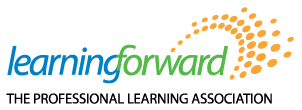Stages and Tools for the Local Education Agency (LEA)
Professional Learning System Framework
Overview
Using data wisely is the foundation for effective continuous improvement systems. Data are used at multiple junctures within such systems. In the early stages of the process, data identify gaps and opportunities and inform priorities. Throughout the process, data provide evidence of progress, growth, and impact.
The vision you created or revised in LEA Stage 1 using LEA Tool 1.1 provides the foundation for every educator's learning. When you determine where you specifically need to focus and provide support, you will need to conduct a deeper analysis of data. Choosing the data that are most useful in guiding professional learning (PL) decision making and determining its effectiveness can be challenging.
Up to this point, it appears that education decision-makers have most often used data sources such as satisfaction surveys and needs assessments for professional learning to guide Title IIA funding decisions. We propose using a different guide to data sources you can use when making funding decisions.
Start with a diagnostic assessment
Work through the appropriate tools
Finish with reflection questions
Robert Fritz (1989) writes that in order to achieve a compelling vision, an organization must be willing to undertake a ruthless assessment of its current reality. The most important data to examine are those data that will help surface the gaps and disproportionalities that must be closed if the vision is to be realized. Thus, data analysis will not only include data on student performance but also data on the essential components of the professional learning vision that impact teaching performance. This stage focuses on data about the essential components of professional learning.
People in different places in an organization also need data for different purposes. While district leaders may review annual student performance data to identify trends and challenges that may need to be addressed systemwide, principals and teacher teams may need individual student records and unit or benchmark test data to guide their decisions about professional learning. Absent appropriate and accessible data, planning for professional learning and support typically is based on hunches and, ultimately, serves no one well.
References
Fritz, R. (1989). Path of least resistance: Learning to become the creative force in your own life. New York, NY: Ballentine Books
Consider the following data sources and how they can be used to guide the professional learning decisions made in professional learning (PL) and improvement cycles:
| Vision | Data source | Informs | Used by | Purpose |
| All students graduate career- and/or advanced- learning ready. |
• Summative tests • International comparisons • Principal and teacher summative evaluations |
• Student group performance gaps (e.g. grade levels, subjects) • Principal and teacher learning gaps • System comparison performance gaps |
• District office staff and stakeholder representatives | • Determine highest priorities for targeting limited Title IIA resources (e.g. middle school math; pre-K literacy; new teachers in schools with the highest FRL (free and reduced lunch) populations |
| All teachers have access to high-quality instructional materials (HQIM). | • District survey of instructional materials w/ independent ratings • Teacher surveys regarding levels of use of available materials • Criteria for selecting and using standards-based instructional materials |
• Identify gaps in the availability of HQIM • Identify problems associated with teacher application of HQIM |
• District office staff • Principals • Teacher leaders |
• Determine sources to fund high-quality instructional materials necessary to address district priorities • Determine where to focus PL in high- priority areas for HQIM |
| All teachers engage in curriculum focused cycles of learning and improvement. | • School schedules • Teacher surveys |
• Allocated time in teacher schedules • Level of commitment to collective responsibility norm |
• District office staff • Principals |
• Determine whether priority schools/teachers need support with scheduling (more time) and/ or learning team processes |
| Teacher leaders, mentors and coaches are effective at supporting the team and individual improvement. | • Observations • Formative Assessments • Benchmarks |
• Focus of mentoring • Coaching support • Modeling • Peer teaching |
• Coaching/Mentor supervisor(s) • Principal |
• Determine priorities for coaching/ mentoring support • Determine support available from another team members |
| Principals are effective at supporting the team and individual improvement. | • Walkthroughs • Formative and summative evaluations • Coaching feedback • Summative tests • International comparisons • Principal and teacher summative evaluations • Teacher surveys |
• Coaching/mentoring priorities • Determination of trends and gaps • Alignment of resources where most needed |
• Principal • Principal supervisor |
• Determine priorities for coaching/ mentoring support • Determine greatest needs • Determine the alignment of resources (e.g. scheduling) |
| District office staff engage in their own learning cycles to support improvement. | • Trend data from all schools • Principal supervisor reports • Coaching/ mentoring supervisor reports • Summative tests • International comparisons • Principal and teacher summative evaluations • Teacher surveys |
• Coaching/ mentoring priorities • Determination of trends and gaps • Alignment of resources where most needed • Student group performance gaps (e.g. grade levels; subjects) • Principal and teacher learning gaps • System comparison performance gaps • Identify gaps in the availability of HQIM • Identify problems associated with teacher application of HQIM |
• District office staff • Board of trustees |
• Determine highest priorities for targeting limited Title IIA resources (e.g. middle school math; pre-K literacy; new teachers in schools with highest FRL populations) • Determine sources to fund HQIM necessary to address the district priorities • Determine where to focus PL in high- priority areas HQIM priority areas • Determine priorities for coaching/ mentoring support • Determine support for coaches/ mentors |
